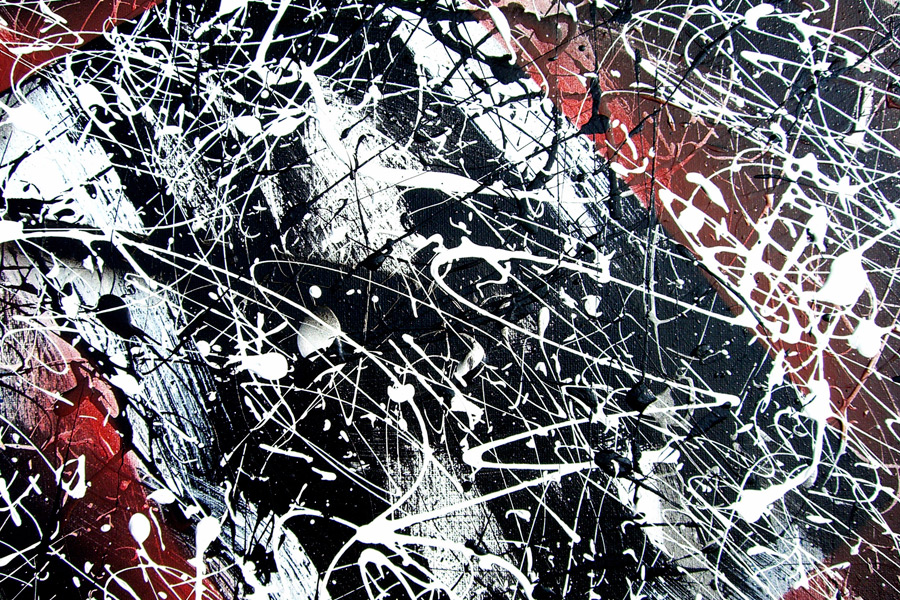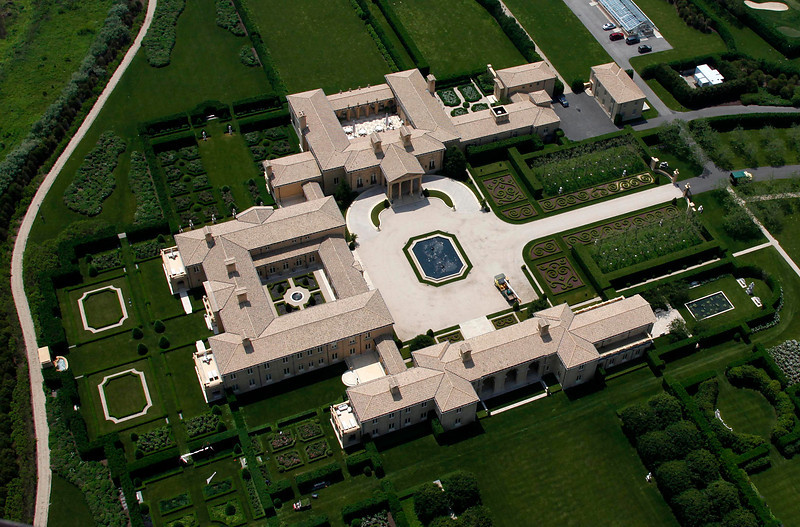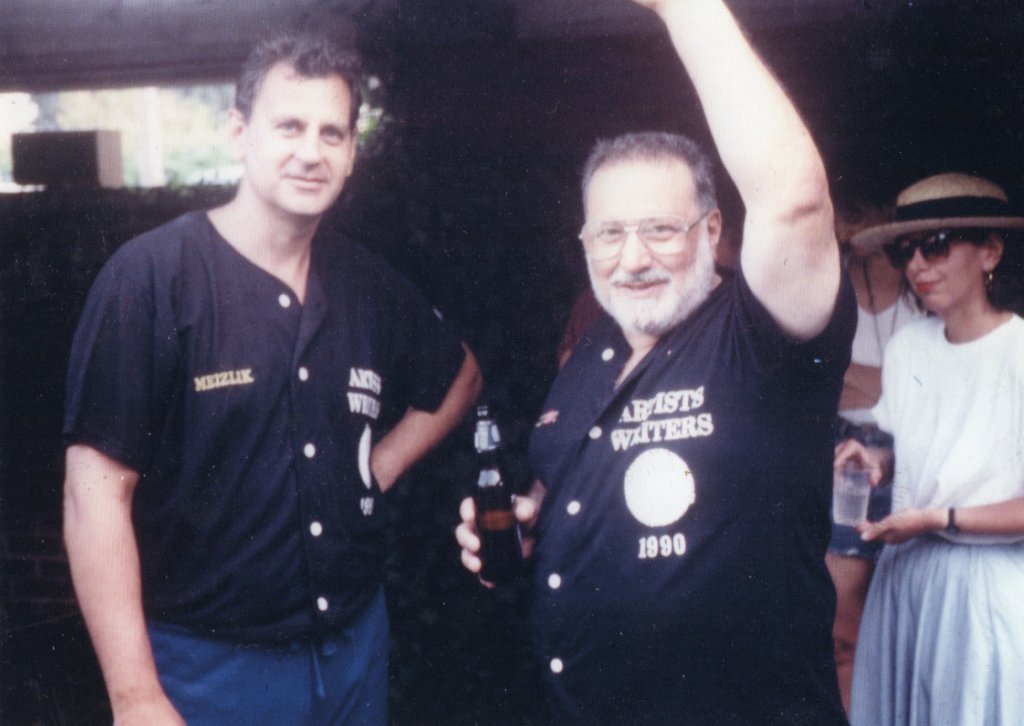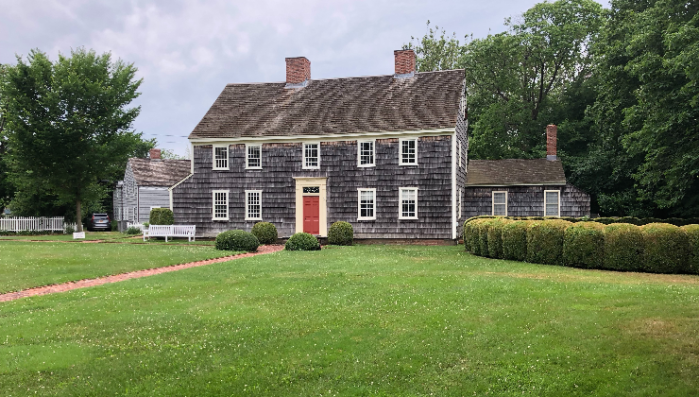Two Art Stories: Dealer vs. Collector, Forged Jackson Pollocks

A two-year-long feud between billionaire Ron Perelman of East Hampton and world-renowned art gallery owner Larry Gagosian of Amagansett has ended with a court ruling in favor of Gagosian. Reading the vitriol thrown around by the lawyers for these two men, even after the decision, it seems unlikely that their long friendship, torn asunder by this lawsuit two years ago, will be on the mend anytime soon. After the decision, Gagosian lawyers declared Perelman a “bully.” Also after the decision, Perelman lawyers referred to Gagosian as “unscrupulous.” And there was a lot worse.
The matter primarily concerned three works of art that Perelman agreed to buy from Gagosian. Over the years the men had done many deals. They would be paid for in cash by Perelman, or even in cash accompanied by other lesser-valued paintings that Gagosian would take in to resell, at a profit, to other customers.
The dispute centered on the unfinished work “Popeye” by Jeff Koons—for which Perelman was to pay $4 million—and eight additional works that he planned to use to pay Gagosian for a $10.5 million Cy Twombly painting and a $12.5 million Richard Serra sculpture, according to The New York Times.
There were two sales agreements at issue—between the Gagosian Gallery and MAFG Art Fund, a separate company that represented Perelman. In 2012, Perelman filed a lawsuit claiming fraud, alleging that Gagosian had artificially inflated the price of the Twombly painting by having a third party buy the work prior to making it available to him. As for the “Popeye” sculpture by Koons, Perelman claimed that at the time Perelman was buying it for $4 million, Gagosian knew that Perelman intended to resell it at a higher price but that the art dealer never told him that there was also a side deal with Koons that, if it were sold for more in a resale, a further commission would have to be paid to Koons, thus reducing the value at a resale. Because Gagosian was refusing to allow this resale to go through without this encumbrance, Perelman claimed that Gagosian, as a longtime “trusted advisor and friend,” should have told him about it in advance, and because he didn’t this too constituted fraud.
During the course of this trial, lower court judge Barbara Kapnick advised the two men to settle their differences “at a cocktail party.” When that did not happen, she then ruled that the case could proceed, and then, in February, she tossed five of the six claims against Gagosian but ruled the fraud claim had legal merit. And last week, by a vote of 5–0, the appeals court ruled the fraud claim, too, was unwarranted, thus ending the saga.
The essence of the case seemed to hinge on whether Gagoisian was a “trusted advisor” or not. If he were, then this might have been fraud. But the judge ruled that the plaintiffs had not made that case.
The ruling states that these were business transactions that had taken place at an arms-length basis. Gagosian had his gallery. Perlman was using his company MAFG Art Fund. As a result, what the paintings and sculptures were worth was a matter of opinion. A seller would want more, a buyer less. And in that regard Perlman should have done due diligence, the ruling said, and he had not.
Part of the decision also hinged upon whether or not Gagosian should have been obliged, after the sale, to have told Perlman about the new obligations involved in a resale. The judge said she could only rely on what was in writing. And in writing, in that agreement, it only said that Gagosian was confirming that the sculpture was by Jeff Koons and that the price for it would be $4 million. That’s all there was. There was nothing in it to guarantee that the value of the paintings was a fair price. That was a matter of opinion, and therefore not a matter for the court. It was buyer beware.
* * *
In another legal action involving art, this time in criminal court, an East Hampton man named John Re has pleaded guilty in federal court to one count of wire fraud following his arrest on charges of having sold, beginning in 2005, fake Jackson Pollock and Willem de Kooning paintings as if they were real.
At the time Re put them up for sale, he claimed he’d found these paintings in 1999 at the home of George Schulte, who operated an antiques-restoring business on Springs Close Highway in Amagansett until the mid ‘90s, before he passed away in 1999. Re said he stumbled upon them because he had been hired to clean the premises, and that he’d found the paintings in the basement. He also said he had letters from the Schulte family which proved they were real, which now, it turns out, he admits, they are not. According to the FBI, he sold these paintings for roughly $2.5 million during the last nine years.
In 1995, Re was sentenced to 2 to 7 years in prison after pleading guilty to being involved with a group of people forging counterfeit $20 bills and putting them into circulation.
In more recent times, he has piloted a submarine, built, he said, for action in World War II, which he had bought as an antique. The name of the sub was the U.S.S. Deep Quest. He’d take it up and down the inland waterway, stopping here and there so journalists in coastal towns could interview him for the local community. Reportedly, he was willing to sell the sub when the price was right.
This sub was seized by the FBI when their agents took possession of his premises after the court ruling, and they now have it floating somewhere. But at least one expert says this is a fake, too, or is just a replica of a prop for a movie that was once made. The real Deep Quest is in a naval museum in Keyport, Washington, or so says Ron Roehmholdt, the former exhibit chief of that facility.
Re, who admits to creating false provenance—the paperwork that shows an artwork’s origins—for the forged paintings, says he didn’t think he did anything wrong. He will be sentenced on April 10.









